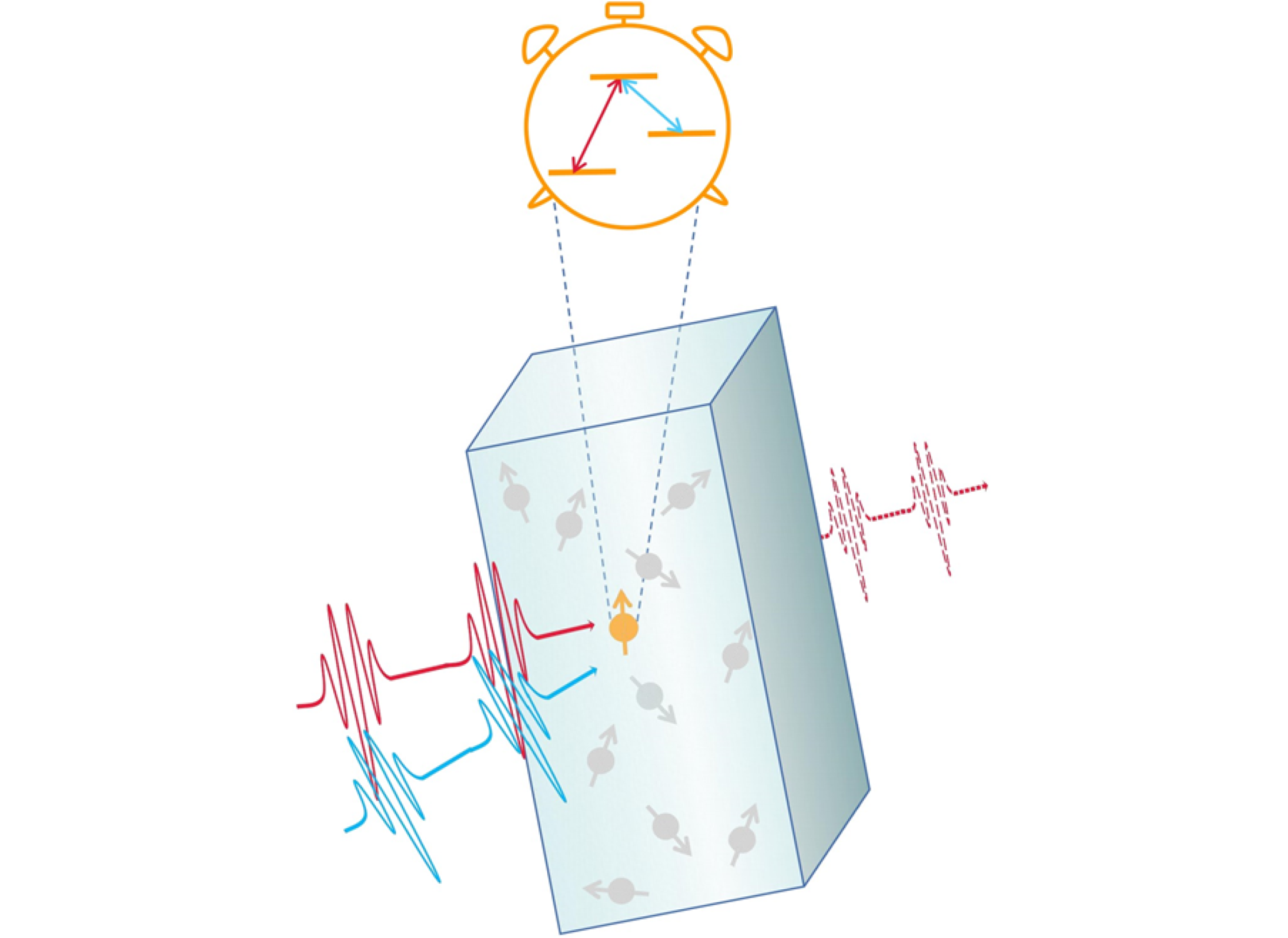In 2006, an experimental result of CRIB storage in a solid-state system was reported for the first time, yet with a low storage efficiency. In this work, the applied material system, an
:YSO crystal, experienced a linear Stark shift and macroscopic electric field gradient [
97,
104]. The efficiency was extended to 15% in a later experiment [
103]. In 2010, CRIB storage and on-demand retrieval of a weak beam at telecommunication wavelength was demonstrated in an
:YSO crystal, with average photon number of one. In this experiment, a second laser beam was used to transfer the states of atoms down to a short-lived ground state from the excited state, which improved the degree of spin polarization and reduced the fluorescence noise arising from the state preparation process [
107]. However, due to the imperfect optical pumping [Fig.5(a)], the large background absortion (
) and reabsorption process limited the storage efficiency to 0.25%. In 2010, a GEM-based memory demonstrated a storage efficiency of 69% for a weak coherent light signal [
108] [the solid line in Fig.5(b)], which was for the first time beyond the no-cloning limit [
109]. The experiment is performed in a 0.005%
:YSO. Given the long ground state lifetime, a 140 dB absorptive top-hat profile was created with a more efficient optical pumping. According to the theoretical model, and considering a perfect optical pumping process, Hedges
et al. [
106] predicted that it is possible to achieve a peak efficiency of about 93% if the crystal length was 10 cm instead of 14 mm.













